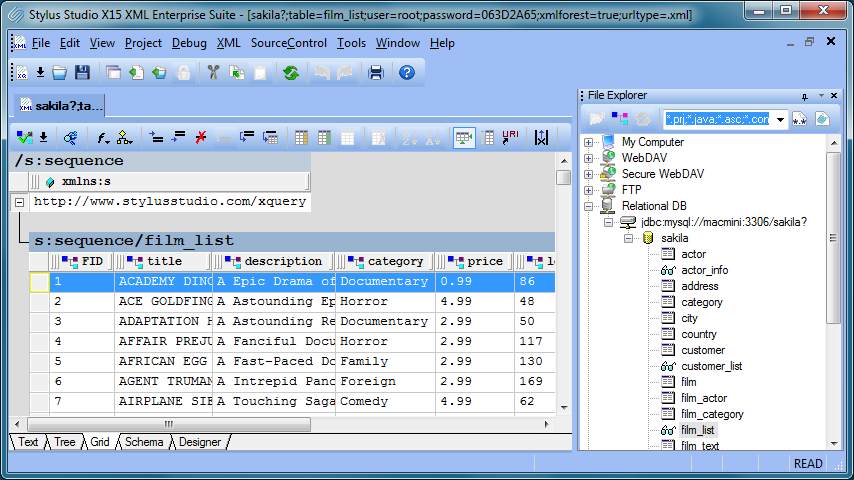

#Sql server xml query vs json query how to
Here’s how to query JSON properties to find the rows you want. The test data I'm using is vehicle year/make/model data from. In addition to the already built-in support for using SerDes, IBM Db2 Big SQL now has built-in JSON SQL functions that will allow the user to store and query. With SQL Server 2016, it now makes sense to store JSON objects in your database (even though there’s no JSON datatype). SQL Server's JSON function signatures are easier to remember and cleaner to write on screen. So let's run some test queries! Is JSON SQL Server's New Sheriff in Town?Īlthough performance is the final decider in these comparison tests, I think JSON has a head start over XML purely in terms of usability. JSONMODIFY (Transact-SQL) changes a value in a JSON string. JSONQUERY (Transact-SQL) extracts an object or an array from a JSON string. JSONVALUE (Transact-SQL) extracts a scalar value from a JSON string. Thus, I highly recommend using JSON instead of XML whenever it is possible. ISJSON (Transact-SQL) tests whether a string contains valid JSON. SQL Server's implementation of XML does have some nice features like a dedicated datatype that reduces storage space and validates syntax, but I find the querying of XML to be clumsy.Īll XML grievances aside, I am still willing to use XML if it outperforms JSON. Besides, the data retrieval from JSON is 2-10 times faster comparing to XML. XML is too wordy (lots of characters wasted on closing tags), it has elements AND attributes (I don't like having to program for two different scenarios), and depending on what language you are programming in, sometimes you need schema files and sometimes you don't. Enter XML, SQL's Bad Hombreįull disclosure: I don't love XML and I also don't love SQL Server's implementation of it. I’ll look at that support in a later column (among other features.

However, even without a JSON datatype, SQL Server 2016 still lets you query data stored in JSON format. CAST(JSONVALUE (DetailsJSON, '. Unlike the XML support in SQL Server, JSON support does not include a JSON data type - you just store JSON objects in a character column (probably defined as VarChar(max)).

Today I want to pit JSON against XML and see which is the better format to use in SQL Server. Let’s add a new virtual column to table that displays the result from the JSONVALUE function this will allow us to create an index and simplify the SELECT queries. Although the implementation is not perfect, I am still a huge fan.Įven if a new feature like JSON support is awesome, I am only likely to use it if it is practical and performs better than the alternatives. It gives flexibility to the developers to convert the result to JSON. Unlike other databases, SQL Server does not have a JSON-specific data type. Sql Server 2016 FOR JSON clause can be used to convert the query result to JSON format. We create a new field to store our JSON data. How do we create a field in SQL Server Creating a JSON Field. So you’ve learned a bit about JSON data and why you might want to use it. Starting with the 2016 release, SQL Server offers native JSON support. How to Create and Populate JSON Field in SQL Server. Additional performance comparisons available in an updated post.


 0 kommentar(er)
0 kommentar(er)
